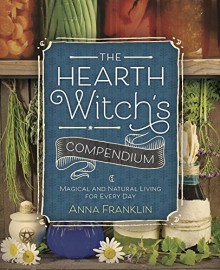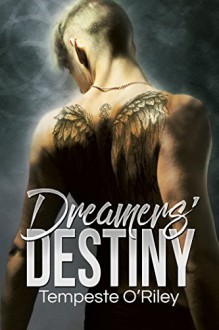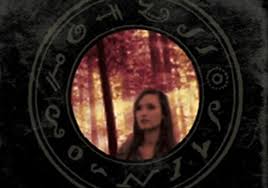
DISCLAIMER: This is a review of an uncorrected proof of THE HEARTH WITCH’S COMPENDIUM. It was received for free with no expectation of a review. The review may not reflect the final version of the book.
Over the past two decades, the Llewellyn publishing house has amassed a reputation for producing an inordinate amount of trend-following (and sometimes ill-researched) beginner witchcraft and New Age spirituality books. While the company has been trying to clean up its image for the last two or three years, they are somewhat reasonable for flooding the market with mediocre encyclopedias, compendiums, and similar collections of spells and folklore. As such, when Llewellyn introduces yet another witchcraft reference guide into the world, the book needs to work hard to stand out against its peers.
The HEARTH WITCH’S COMPENDIUM, thankfully, tries to be a refreshing take on the tired genre. The book can be divided roughly into three sections: food and drink, home life, and herbs/essential oils. Where most published spell collections focus on things like making charms or burning colored candles, the COMPENDIUM incorporates everything from wine-making to everyday soap into the titular hearth witches’ lifestyle. Anna Franklin’s evident expertise makes for a very well-rounded read, especially in sections like the aforementioned wine-making chapter. Self-sufficiency is the name of the game, although Franklin is more than happy to include interesting historical or scientific trivia to go along with the various recipes themselves.
However, there are a few noteworthy problems with THE COMPENDIUM’s writing style and organization. Since Franklin believes eliminating harmful products from one’s life is inherently magical, there are entire chapters so focused on practicality that they end up ignoring magic entirely. For example, there are nearly 150 pages between when essential oils are introduced to when their magical uses and correspondences are explained. Meanwhile, almost all the recipes are very short and easy to misinterpret. It’s a classic mistake that happens when an author includes only the basic information that they personally need without considering that the reader might not be at the same skill level as the them.
As an author, Anna Franklin is one of dozens that started out during the witchcraft publishing boom of the 90s. Her reputation is typical of her demographic: most of her books aren’t noteworthy enough to recommend as must-read, but they’re not worth avoiding either. Her books tend to follow trends, and her most well-known are her Sabbat books and tarot decks. The COMPENDIUM feels like more of the same fodder, as it’s overtly trying to appeal to the organic living crowd. Exactly how much the reader will like it corresponds directly to how much they like being told repeatedly that chemicals are bad. The HEARTH WITCH’S COMPENDIUM won’t change that image of her, but it’s worth a look as a solid introduction to natural living with a magical twist.

 Log in with Facebook
Log in with Facebook 


![The Complete Cate Tiernan Sweep Series Books 1-15 in Five Volumes [Book of Shadows, Coven, Blood Witch, Dark Magick, Awakening, Spellbound Calling, Changeling, Strife, Seeker, Origins, Eclipse, Reckoning, Full Circle, Night's Child] - C. Tiernan,Cate Tiernan The Complete Cate Tiernan Sweep Series Books 1-15 in Five Volumes [Book of Shadows, Coven, Blood Witch, Dark Magick, Awakening, Spellbound Calling, Changeling, Strife, Seeker, Origins, Eclipse, Reckoning, Full Circle, Night's Child] - C. Tiernan,Cate Tiernan](http://booklikes.com/photo/max/220/330/upload/books/a/7/a761794dd9b3a8cc2e2c0aaaa0c6a704.jpg)
 This series of YA mini novels contains 15 books in total. They mainly follow the story of Morgan, a 16-year-old American girl who discovers that she is a blood witch (witch by birth) and possesses an unusual amount of power. Through the series, the reader journeys with Morgan as she discovers her power and the dark past of her ancestors. Their past quickly becomes her nightmare as she is targeted by a dangerous and powerful coven of witches, intent on using her power even at the expense of her life.
This series of YA mini novels contains 15 books in total. They mainly follow the story of Morgan, a 16-year-old American girl who discovers that she is a blood witch (witch by birth) and possesses an unusual amount of power. Through the series, the reader journeys with Morgan as she discovers her power and the dark past of her ancestors. Their past quickly becomes her nightmare as she is targeted by a dangerous and powerful coven of witches, intent on using her power even at the expense of her life.







